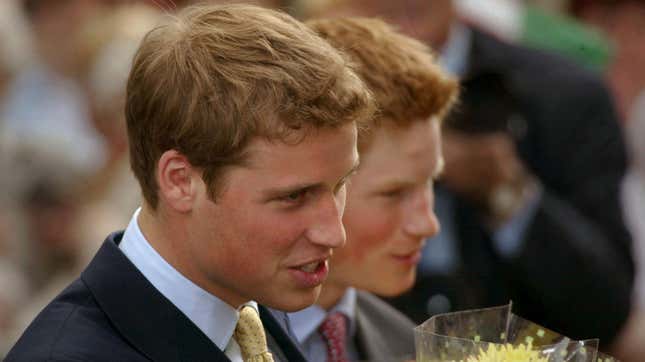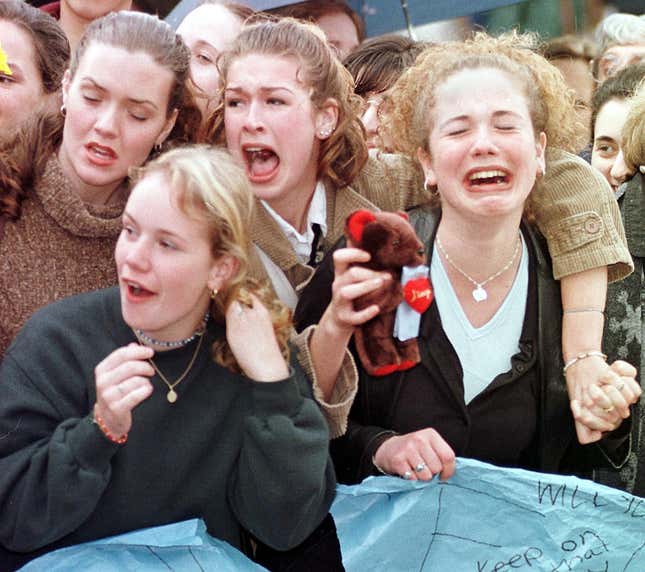The Undying Fantasy of a Dreamy Prince William
The 1990s narrative of William as hottie lives still, because it’s too powerful a story for the media and the monarchy alike to jettison.
CelebritiesRoyal Tea
Image: (Photo by Sion Touhig/Getty Images)
Ebay is littered with vintage posters of one of the great teen idols of the late 1990s: Prince William.
One features a shot of William in a suit and tie, identified in Limited Too-adjacent blue font, with a Backstreet Boys pinup on the opposite side. Another has him grinning toothily in a beige sweater; that one pairs him with N*SYNC. But perhaps the most iconic was the work of Starmakers Rising out of Boca Raton, Florida, circa 1998, featuring the young prince in a bright blue shirt against a blue sky, chin tucked, mouth in a faintly bashful smile, his mother’s blue eyes shining out from under her iconic blonde hair. The effect is Jonathan Taylor Thomas by way of Brooks Brothers. The same photo appeared on the February 1998 cover of YM, which anointed him “prince of our hearts.”
William was a sure bet as a future teen idol at birth, so much so they might as well have added it to his other titles. As a future king and son of the media star of the 1990s—a literal, real-life prince, tracking age-wise with a generation of girls raised on a revived Disney myth—he was a shoo-in as long as he had even remotely passable looks. While she denied it, an old Marlborough roommate told the press that Kate had a poster of William on her wall during her boarding school days. Twenty years later, the blond locks are nearly gone, his younger brother has eclipsed him in the looks-and-swagger department, and Wills has settled into a somewhat staid middle age. And yet, despite it all, the narrative of William as hottie hasn’t died entirely, because it’s simply too powerful a story for the media and the monarchy alike. To be a prince is to be desirable and that desirability is part and parcel of the monarchy’s social power.
The Sun recently reported that researchers had found William the sexiest bald man alive; the future Prince of Wales also caused a stir when he bared his more-muscled-than-expected arm for his Covid vaccine. His publicity apparatus subtly feeds it, too: The Instagram account he shares with his wife is full of images of William as a trim and athletic sportsman, kicking around a soccer ball, climbing into a racecar. To echo Jane Austen, any adequate man with a sufficiently impressive title must, by the immutable logic of the fairy tale, be desirable.
-

-

-

-

-

-

-

-

-

-

-

-

-

-

-

-

-

-

-

-

-

-

-

-

-

-

-

-

-

-

-

-

-

-

-

-

-

-

-

-









































